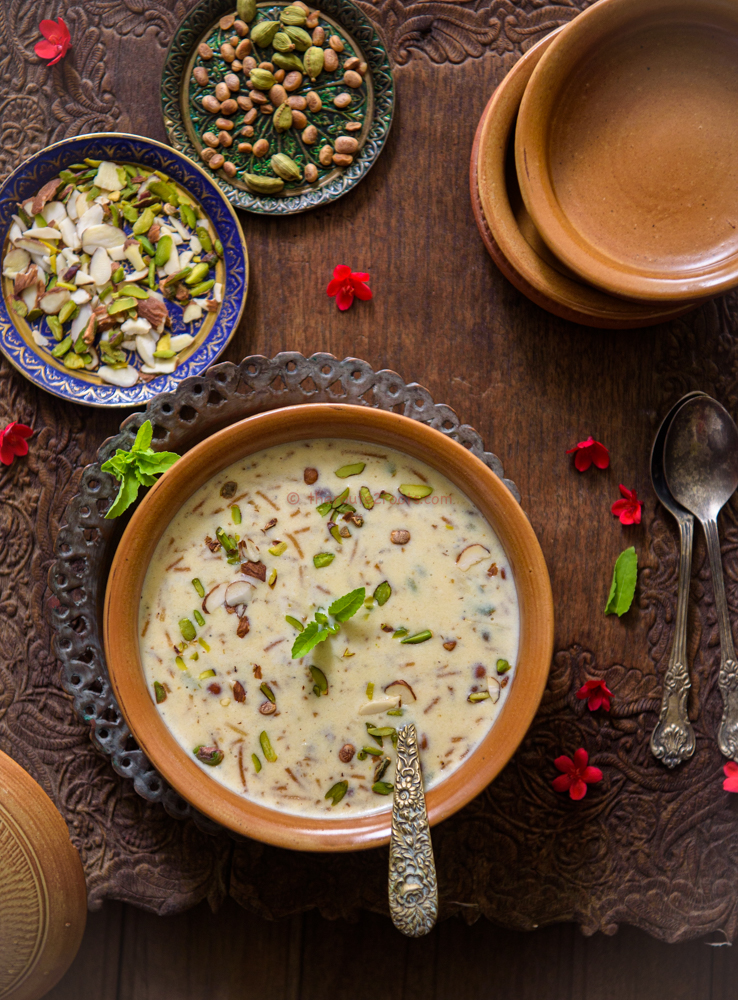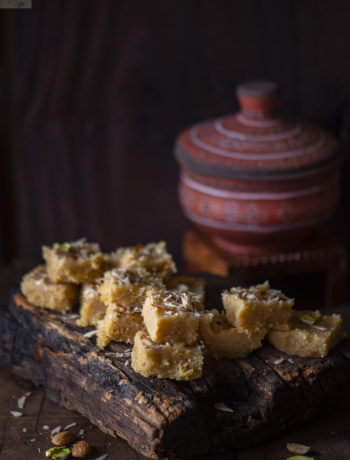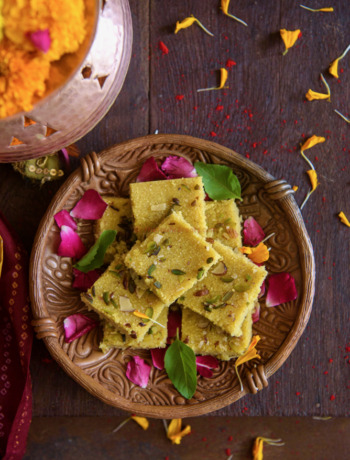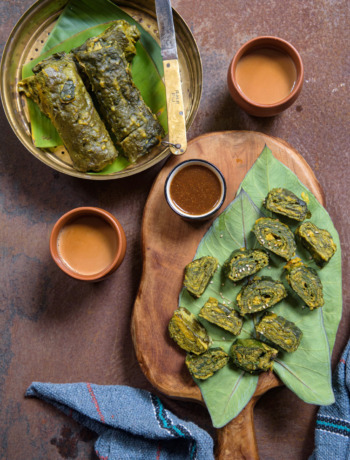Doodhpak-Poori feasts have always been special. In the household I grew up, it was a must during the festive spreads of Randhan Chath/Sitla Satam (the day we eat baasi food). And on Bestu Varsh (Gujarati New Year) also.
Laapshi, Ladoo and Doodhpak are the most revered mishtan of Gujarati cuisine.Doodhpaak Pak is chironji laced Gujarati take on Kheer. While the core ingredients i.e. rice and milk remain the same as kheer, their ratio differs. Doodhpaak calls for a negligible amount of rice (1 tablespoon for a litre of milk). The idea is not just to cook the rice to infuse the milk with its flavour and aroma, but the milk as well until it thickens a little and takes up the mellow brown colour. A well-made, fragrant doodhpak with charoli seeds dancing on the top is a high point of a festive Gujarati meal.
If we dig deeper doodhpak does not remain limited to rice+milk, we also have doodhpak made with wheat, yam, bottle-gourd, almonds, sago, rajgira, boondi, sev… to name a few. Versatile, isn’t it?
The picture here is of Ghau ni Sev no Doodhpaak, quite similar to Semiya Payasam but made with hand-rolled, sun-dried Ghau ni sev that are quite a delicacy here. I will post on the absolute traditional way we enjoy the ghau-ni-sev, but this one is to share one of the many ways we have enjoyed these hand-rolled whole wheat sev ( noodles for easy comprehension). Ghee-roasted sev, slow cooked in full-fat milk and enriched further with mawa, makes it one of the best doodhpak I have enjoyed (and made 😆). One thing that you never forget to add to any doodhpak is Charoli. It signifies that the mishtan is Doodhpak and not kheer.
Recipe on the blog with more doodhpak recipes on the way…

Ghau ni Sev no Doodhpaak
Ingredients
- 1/2 cup Ghau ni Sev, broken into 1/2 inch pieces
- 3.5 cups full cream milk
- 1/4 to 1/3 cup sugar
- 1/4 cup mava/khoa, crumbled
- 1 tablespoon ghee
- 1/4 teaspoon green cardamon powder
- 1/4 teaspoon nutmeg powder, freshly grated
- 2 teaspoon Charoli/Chironji (a must)
- 2 teaspoon slivered almonds
- 2 teaspoon slivered pistachios
Instructions
Take a thick bottom saucepan to make the Doodhpaak.
One a low to medium flame, place the saucepan add the ghee.
Fry the Ghau ni Sev till it turns golden. Be careful that you don't burn them.
Now add the milk, cook the Doodhpaak on a very low flame until the sew is cooked and milk has thickened.
You will be cooking the milk for 20 minutes on a low flame.
Give the Doodhpaak an occasional stir while it is cooking.
Once the sev is cooked, add the crumbled mawa and sugar.
After adding the sugar cook the mixture for 5 to 7 minutes more. The Doodhpaak will thicken considerably.
As the sugars in the milk caramelise it will will take a very light colour, and that is what we want in a doodhpaak. A sign that the milk has cooked well.
At the end of the cook add the aromatics and nuts.
Turn off the flame.
Transfer the Doodhpaak in a serving container, garnish with some more slivered nuts.
Serve Doodhpaak at room temperature or cold with puri or phulka roti.





No Comments